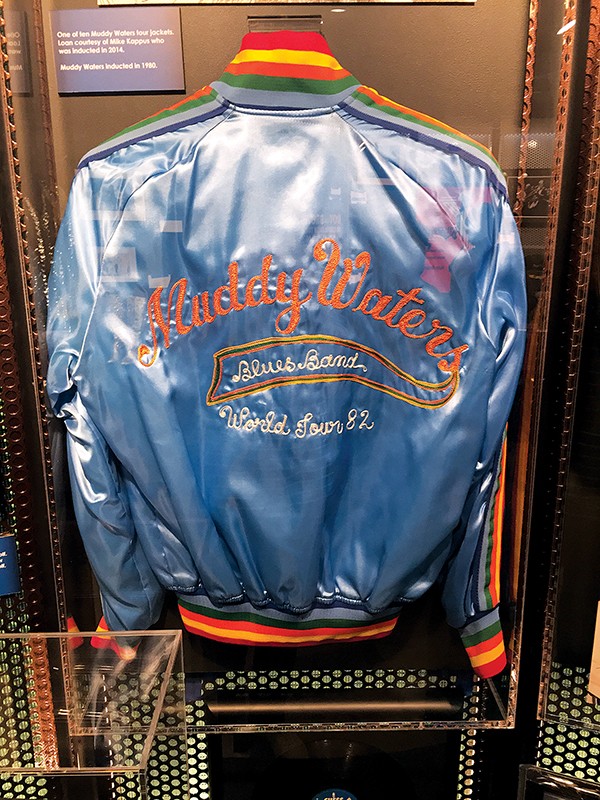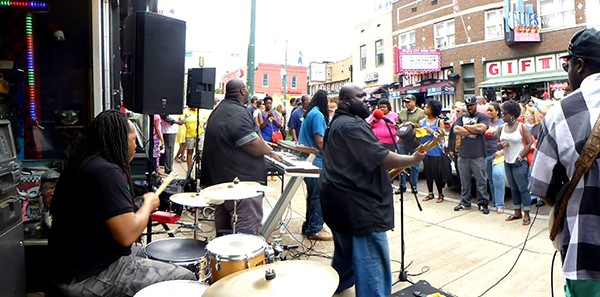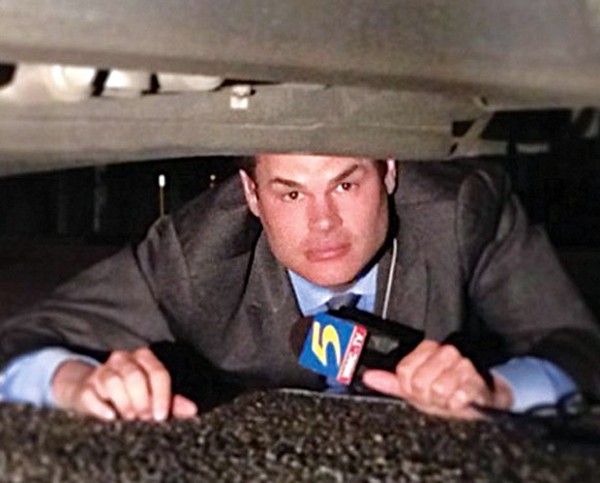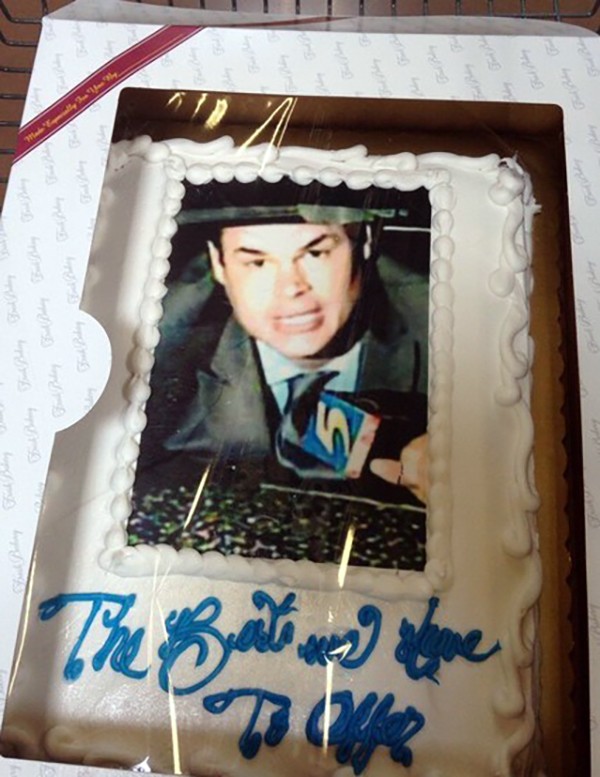Little Walter’s harmonica, Johnny Winter’s Firebird guitar, and Koko Taylor’s $2,000 gold boots all have a new home at the Blues Hall of Fame, along with many other artifacts that tell the story of influential blues musicians nationwide.
“Once we got rolling, the artifacts being donated just kept on coming,” said Nora Tucker, manager and curator.
“Almost all of our donations come from the families of musicians, which is a testament to how long the Blues Foundation has been around and our relationship to the blues community.”
Opened in 2001, the Blues Foundation’s headquarters sits across the street from the Lorraine Motel on S. Main, with a recently constructed life-size statue of Little Milton greeting people as they walk by. Inside, to the right of the Blues Foundation entrance, is a nine-panel art gallery that will feature the work of legendary blues photographer Dick Waterman for the next six months.
Past the free art gallery is a large set of stairs descending to the Blues Hall of Fame. Complete with interactive screens that act as a database for hundreds of blues artists, the Blues Hall of Fame features guitars, stage clothing, Grammy Awards, and even platinum records from artists like Muddy Waters, Robert Johnson, and Stevie Ray Vaughan. Other highlights of the exhibit include Albert “Master of the Telecaster” Collins’ amazing leather jacket, original hand-written lyric sheets from W.C. Handy and Memphis Slim, an original Otis Spann electric piano, and many more one-of-a-kind artifacts. Tucker said that when curating the Blues Hall of Fame, the Blues Foundation wanted to focus on the blues as a genre instead of the bigger musical landscape of Memphis and Mississippi.

One of ten tour jackets left from the Muddy Waters 1982 World Tour.
“We are the Blues Hall of Fame, so we specifically recognize all this great work that has been done within the blues genre,” Tucker said. “We don’t really need to tell the story of what created the blues because it’s already being told at places like the Blues Exhibit in Tunica and the Rock and Soul Museum. You can go to other museums and see a chronological story about Memphis music and its evolution, but we wanted to create something that concentrates specifically on blues musicians and their bodies of work.”
Even with an amazing start to their collection underway, Tucker said the exhibit will grow and evolve as more musicians get inducted into the Blues Hall of Fame.
After a 10-month construction process, the Blues Hall of Fame will officially open at 10 a.m. on Friday, May 8th during the weekend-long Blues Foundation celebration, which includes the 36th Annual Blues Awards.
Thursday, May 7th
10 a.m. — Will Call and BMA Merchandise Sales – Ticket Desk Cook Convention Center (immediately across the street from Sheraton entrance)
Noon–3 p.m. — Health screening for blood pressure, diabetes, cholesterol, custom ear plugs provided by Musicares, and more. — Sheraton Memphis Downtown (St. Louis foyer at top of escalator)
1-3 p.m. — Yellow Dog Records Showcase with Fo’ Reel and Eden Brent — B.B. King’s, 143 Beale, free
1:30–3:30 p.m. — The Recording Academy Chicago & Memphis Chapters Reception Celebrating the Blues Music Awards — Heritage Ballroom Sheraton Memphis Downtown
5:30 p.m. — The Party Begins Reception, featuring performances by 2015 Blues Music Award nominees — Grand Lobby, Cook Convention Center
5:30-9:45 p.m. — Auction & Blues Music Award Merchandise Sales — Outside the Ballroom, Cook Convention Center
6:30 p.m.-1 a.m. — Dinner, Awards, & Nominee performances — Ballroom, Cook Convention Center
Friday, May 8th
10 a.m.-5 p.m. — Grand Opening of the Blues Hall of Fame — 421 S. Main
11 a.m.-11 p.m. — Tennessee Brewery Revival with Billy Gibson — 495 Tennessee St. (2 blocks from Blues Hall of Fame)
1-5 p.m. — Brandon Santini’s 4th Beale Street Mess Around — Proceeds benefit the HART Fund, with performances by: Janiva Magness, John Primer & Bob Corritore, Victor Wainwright, Jarekus Singleton, Andy T- Nick Nixon Band, EG Kight & Greg Nagy, Monster Mike Welch & Anthony Geraci, Igor Prado, Lisa Mann, Annika Chambers, Mick Kolassa, Jeff Jensen Band, Wendy DeWitt & Kirk Harwood, and more — Rum Boogie Café
4:30-8:30 p.m. — Play-it-Forward Fundraiser, benefiting Generation Blues. Featuring Andy T-Nick Nixon Band, Janiva Magness, Brandon Santini, John Primer with Bob Corritore, EG Kight, Lisa Mann plus many other special guests — Hard Rock Café
4:30 p.m. — Barbara Blue Beale Street Note Dedication — Silky O’Sullivan’s
6-10 p.m. — 30th Anniversary with Tas Cru & Band of Tortured Souls — Rum Boogie Café
8 p.m. — BMA Blues Jam proudly presented by 2 Left Feet, featuring the Electrix (Eli Cook, Scott Holt, Eddie Turner), Roger Earl & Bryan Bassett of Foghat, Billy Blough & Jeff Simon of the George Thorogood Band, and more — Earnestine & Hazel’s
9 p.m. — Bernie Pearl & Barbara Morrison — Blues Hall
10 p.m. — Vizztone Label Group Presents: Bob Margolin, Amanda Fish, Dave Gross, Long Tall Deb, Rob Stone, and more — Rum Boogie Café
10 p.m. — Barbara Blue’s official CD release party — Hard Rock Café
Saturday, May 9th
10 a.m.-5 p.m. — Blues Hall of Fame Open — 421 S. Main
5:30 p.m. — Women in Blues Showcase — Rum Boogie Café
9 p.m.– Gracie Curran & the High Falutin’ Band — Rum Boogie Café


 Courtesy Shelby Farms
Courtesy Shelby Farms  Courtesy Shelby Farms
Courtesy Shelby Farms 
 Justin Fox Burks
Justin Fox Burks 




